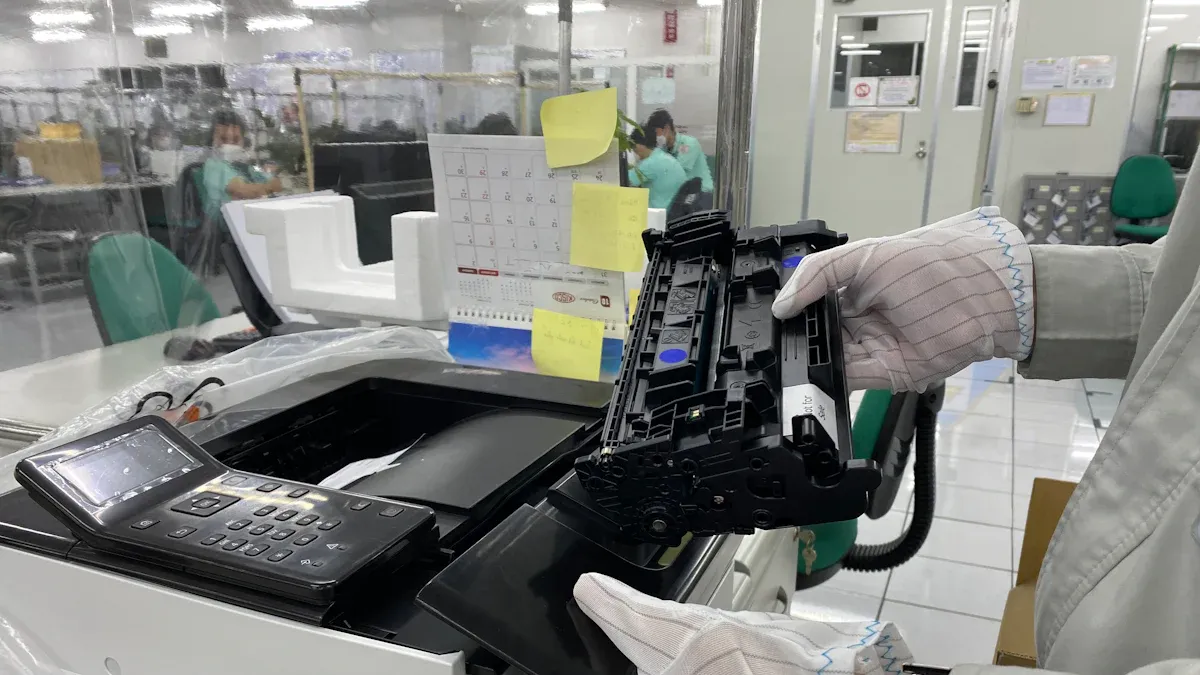
Battery fastidiousness means you must demand high safety, reliability, and strict compliance when choosing power sources for Medical Disinfection Robots. You minimize risks in sterile environments by selecting lithium battery packs and scheduling regular maintenance. These steps directly affect robot performance and patient safety, setting a new standard for healthcare operations.
Key Takeaways
Choose lithium battery packs for medical disinfection robots to ensure safety, reliability, and compliance with international standards.
Implement regular maintenance and monitoring to extend battery life and maintain consistent performance in sterile environments.
Stay updated on regulatory standards and best practices to minimize contamination risks and enhance the efficacy of robotic disinfection.
Part 1: Battery Requirements for Medical Disinfection Robots

1.1 Safety and Reliability
You must prioritize safety and reliability when selecting batteries for medical disinfection robots. These robots operate in environments where any failure can compromise patient safety and disrupt hospital workflows. Battery packs must meet strict safety standards to prevent overheating, leakage, or fire hazards. You should look for batteries with built-in protection circuits and robust enclosures that withstand frequent sterilization cycles.
Tip: Always verify that your battery supplier complies with international safety standards such as IEC 62133 and ISO 13485. These certifications ensure that the batteries used in disinfection robots meet the highest safety benchmarks.
Reliability extends beyond safety. You need batteries that deliver consistent power output, maintain stable voltage, and support long operational hours. Disinfection robots often run multiple cycles daily, so battery packs must offer high cycle life and minimal degradation. If you choose batteries with advanced battery management systems, you can monitor performance in real time and prevent unexpected failures.
1.2 Lithium Battery Packs
Lithium battery packs have become the preferred choice for medical disinfection robots due to their superior energy density, long cycle life, and lightweight design. You benefit from reduced downtime and increased operational efficiency. Lithium chemistries such as LiFePO4, NMC, LCO, LMO, and LTO each offer unique advantages for disinfection robots.
Chemistry | Platform Voltage (V) | Energy Density (Wh/kg) | Cycle Life (cycles) | Typical Application Scenarios |
|---|---|---|---|---|
LiFePO4 | 3.2 | 90-160 | 2000-7000 | Medical, robotics, security |
NMC | 3.7 | 150-220 | 1000-2000 | Infrastructure, industrial |
LCO | 3.7 | 150-200 | 500-1000 | Consumer electronics |
LMO | 3.7 | 100-150 | 300-700 | Industrial, medical |
LTO | 2.4 | 70-110 | 7000-20000 | Medical, security systems |
You should select the chemistry that best matches your disinfection robots’ operational needs. For example, LiFePO4 batteries offer excellent thermal stability and long cycle life, making them ideal for hospital disinfection problem scenarios. NMC batteries provide higher energy density, which suits disinfectant service robots that require extended runtime. LTO batteries excel in fast charging and ultra-long cycle life, supporting automated disinfection in high-throughput environments.
Note: Lithium battery packs also support sustainability goals. Learn more about sustainable battery practices and conflict minerals compliance to ensure your supply chain aligns with ethical standards.
1.3 Maintenance and Monitoring
You must implement regular maintenance and monitoring protocols to maximize the lifespan and performance of batteries in disinfection robots. Routine inspections help you detect early signs of wear, capacity loss, or safety risks. You should use advanced battery management systems to track charge cycles, temperature, and voltage in real time.
Maintenance Checklist for Disinfection Robots:
Inspect battery terminals and connectors for corrosion.
Monitor charge/discharge cycles using BMS software.
Test battery capacity monthly to ensure effective disinfection.
Replace batteries that show significant degradation or fail safety checks.
Document all maintenance activities for compliance audits.
If you follow these steps, you reduce the risk of unexpected downtime and maintain the reliability of your medical disinfection robots. You also ensure that disinfectant service robots deliver consistent performance in sterile environments.
Alert: Neglecting battery maintenance can lead to operational failures and compromise patient safety. Always prioritize battery health to support the mission-critical role of disinfection robots in healthcare facilities.
Part 2: Standards for the Battery of Disinfection Robots in Sterile Environments

2.1 Regulatory Standards
You must follow strict regulatory standards when deploying batteries in medical disinfection robots. These standards protect patients and staff from contamination and ensure the efficacy of hospital cleaning procedures. You will encounter several international and local regulations that guide the design, installation, and maintenance of lithium battery packs in sterile environments.
The most recognized standards include:
IEC 62133: This standard covers safety requirements for rechargeable batteries, including lithium chemistries such as LiFePO4, NMC, LCO, LMO, and LTO. You can review the official documentation at IEC 62133.
ISO 13485: This standard specifies requirements for quality management systems in medical devices, including robotic disinfection equipment. You can find more details at ISO 13485.
Hospital Protocols: Many hospitals create their own protocols for battery safety, contamination control, and disinfection efficacy. These protocols often reference international standards and add site-specific requirements.
Standard | Scope | Application Scenario | Key Focus Areas |
|---|---|---|---|
IEC 62133 | Battery safety | Medical, robotics, security | Overheating, leakage, fire |
ISO 13485 | Quality management | Medical devices | Documentation, traceability |
Hospital Protocols | Site-specific compliance | Hospital cleaning, uv-c disinfection | Contamination, efficacy |
You must select lithium battery packs that meet or exceed these standards. This approach ensures your ultraviolet disinfection robots deliver consistent germ-killing uv light and maintain high disinfection efficacy. You also reduce the risk of contamination in critical hospital areas.
Note: If you want to align with sustainability and ethical sourcing, review sustainable battery practices and conflict minerals compliance. These practices support long-term hospital cleaning goals and responsible supply chains.
2.2 Compliance and Best Practices
You face several challenges when managing battery compliance for robotic disinfection in sterile environments. You must address documentation, traceability, and ongoing monitoring to prevent contamination and maintain efficacy. You should implement best practices that align with both regulatory standards and hospital protocols.
Common Compliance Challenges:
Incomplete documentation of battery maintenance and replacement.
Inconsistent monitoring of battery health and charge cycles.
Difficulty in tracing battery origin and verifying ethical sourcing.
Failure to update protocols as standards evolve.
Best Practices for Battery Management:
Maintain detailed records for every lithium battery pack used in ultraviolet disinfection robots. You should log installation dates, maintenance checks, and replacement history.
Use advanced battery management systems to monitor charge cycles, temperature, and voltage. This step helps you detect early signs of degradation and prevent contamination risks.
Train staff on proper handling and disposal of batteries to avoid accidental contamination during hospital cleaning.
Regularly review and update your protocols to reflect changes in IEC, ISO, and hospital standards. You can access updates from IEC and ISO.
Tip: You can improve compliance by integrating automated alerts and digital logs into your robotic disinfection workflow. This approach reduces human error and supports continuous improvement in disinfection efficacy.
You must select battery chemistries that match your application scenario. For example, LiFePO4 batteries offer long cycle life and thermal stability for hospital cleaning and robotic disinfection. NMC batteries provide higher energy density for extended operation in ultraviolet disinfection robots. LTO batteries excel in fast charging and ultra-long cycle life, supporting high-frequency uv-c disinfection routines.
You can minimize contamination and maximize efficacy by following these standards and best practices. Your hospital cleaning teams will benefit from reliable, safe, and efficient robotic disinfection powered by advanced lithium battery packs.
You ensure medical disinfection robots perform reliably by selecting lithium battery packs with strict standards.
You maintain safety and efficiency through regular battery monitoring and maintenance.
You will see future advances in LiFePO4, NMC, LTO, and other chemistries, supporting robotics, security, and industrial applications.
Battery fastidiousness drives innovation and compliance in healthcare robotics.
FAQ
How do lithium battery packs improve hospital disinfection robot performance?
Lithium battery packs, such as LiFePO4 and NMC, deliver stable voltage and long cycle life. You achieve reliable hospital cleaning and reduce downtime in every hospital department.
What maintenance steps should you follow for hospital battery packs?
You inspect battery terminals, monitor charge cycles, and replace degraded packs. Hospital staff must document every maintenance activity to meet hospital compliance and ensure hospital safety.
Can Large Power customize lithium battery solutions for hospital applications?
You can request a custom lithium battery pack for hospital robots, security systems, or industrial use. Visit Large Power Custom Consultation for tailored hospital solutions.
Note: Proper battery management in every hospital reduces healthcare associated infections and supports a safer healthcare environment.




